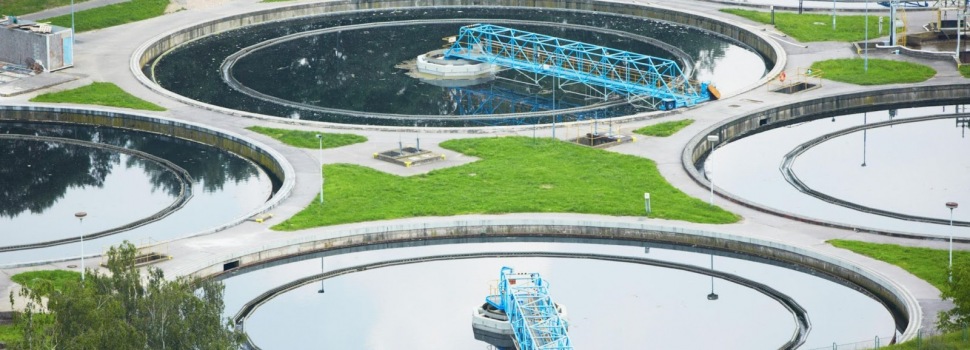Bacteria and other harmful organisms can thrive in wastewater from toilets, washing machines, sinks, and baths.
It is therefore crucial that wastewater is properly treated and discharged to avoid contaminating water sources. Fortunately, the treatment process can be handled using a wastewater treatment system.
So, what is a wastewater treatment system, and how does it work?
Need An Urgent Fix? Call Us Now!
What Is Wastewater?
Commercial, industrial, and domestic activities utilise a lot of water. The liquid waste released by these activities is called wastewater.
Water constitutes about 99.0% of wastewater, and inorganic compounds, microorganisms, and organic matter take up the remaining 1.0%.
The primary domestic wastewater sources are laundry, food preparation, bathing, and restroom usage. Manufacturing processes and commercial enterprises, such as salons and carwashes, are other wastewater sources.
The organic component of wastewater varies depending on its source, but it typically contains soaps, fat, protein, food scraps, grease, and human faeces.
What Are Wastewater Treatment Plants?
A water treatment plant is an installation that uses biological, chemical, and physical processes to treat wastewater.
The plant replenishes the oxygen amount in the water and gets rid of pollutants and solids. The plant then returns the water to the ocean, rivers, streams, and other places.
Since most wastewater plants produce odour, the treatment plants should be located far away from commercial and residential houses. It is also possible to make modifications, such as replacing belt presses with integral covers, to reduce the odour.
How Does Wastewater Treatment Work?
When wastewater goes through aerated wastewater treatment systems, it generally undergoes four phases: pretreatment, primary treatment, secondary treatment, and water reuse.
Pretreatment
Wastewater has many non-soluble wastewater solids that increase the pollutant load. Before the wastewater is treated, it must undergo a pretreatment phase.
The pretreatment phase starts in the sedimentation tanks, determining the number of insoluble solids and removing them. This step also determines custom design systems, operating conditions, costs, and quality requirements.
Similarly, the pretreatment step may include a sand washer or sand classifier that washes away any sand in the water. The washing compactor then removes fibrous materials. Finally, the plant will remove oil and grease by making it float before skimming off.
Primary Treatment
Primary treatment relies on gravity to make materials settle out or float.
This process includes sedimentation, grit removal, comminution, and screening.
-
Screening: Screens have parallel bars and spaces of not more than 6mm. The screens remove hard, coarse, and fine materials, such as metals, rags, and paper.
-
Comminution: This process subdivides large solids into tiny particles. The small particles are then drawn along the circuit and continue to other treatment steps.
-
Grit removal: This process extracts fibres, gravel, sand, and other fine particles to prevent the clogging of pipelines and channels. Grit removal aims to remove the maximum mineral matter with the smallest amount of organic matter.
-
Sedimentation: As the wastewater flows through the tank, its speed is reduced so that floating particles will settle out. Consequently, solids will accumulate at the bottom of the tank and must be periodically removed.
Secondary Treatment
The secondary water treatment purifies the wastewater by using microorganisms to remove contaminants. Since this process relies on multiple bacterial communities, it can either be anaerobic or aerobic.
Aerobic Wastewater Treatment
The aerobic process improves water quality by mixing oxygen with the wastewater by using a compressor or air blower.
Speciality microbes, such as protozoa and bacteria, feed on the organic contaminants in the wastewater and break them into smaller particles. The broken-down contaminants are then transformed into biogas or carbon dioxide.
It is important to note that the microorganisms will also need nutrients and the right temperature and pH levels.
Anaerobic Wastewater Treatment
Anaerobic treatment is the conversion of organic matter in wastewater to sludge and biogas. Biogas consists of methane that can generate heat or power, making it a source of energy.
On the other hand, sludge contains rich nutrients that boost soil fertility and support agricultural activities. Generally, most wastewater plants use a combination of aerobic and anaerobic processes for secondary treatment.
Wastewater Recycling and Disposal
The water from the treatment plant can either be disposed of or reused.
Recycled water can supplement existing water sources and boost water resilience, sustainability, and security. This means that the wastewater treatment systems must connect to the existing water supply infrastructure.
The recycled water can be used for several purposes, such as:
-
The construction process, including concrete mixing
-
To clean surfaces at construction sites, roads, and other areas
-
To irrigate landscaping areas such as golf courses, right-of-ways, and parks
-
Environmental restoration and agriculture
Work With Tunnel Vision - Perth’s Wastewater Experts
Wastewater treatment reduces environmental pollution, boosts existing water supplies, and reduces disposal costs. However, you need a wastewater disposal expert to guide you.
Tunnel Vision is an Australian company that can help clients correctly manage domestic, commercial, and industrial wastewater.
Contact us for more information about wastewater disposal services in Perth on 1800 631 799, or book online now!

